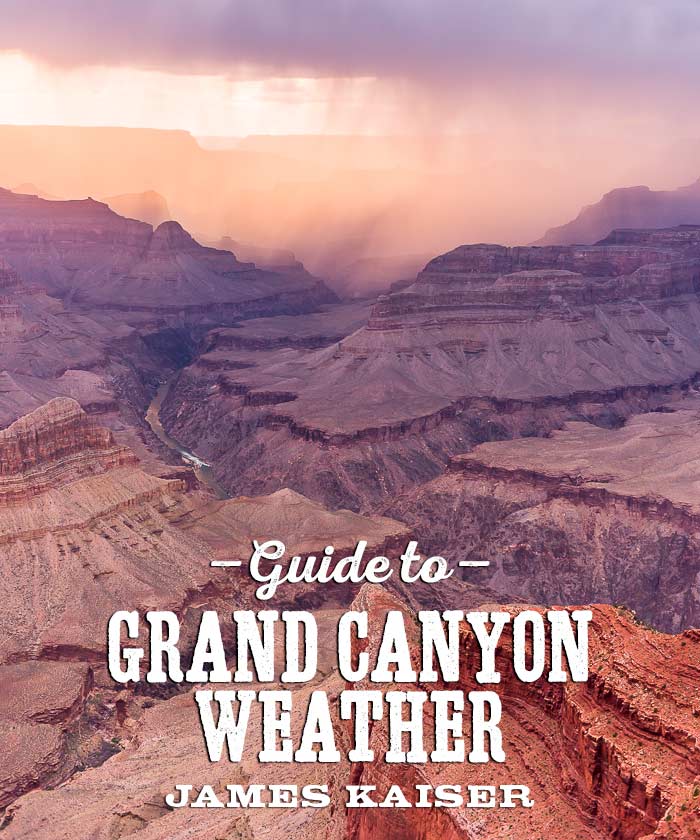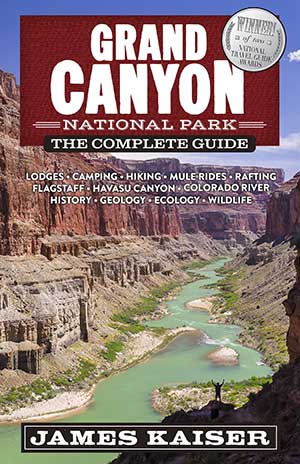
It’s important to understand Grand Canyon’s weather patterns before you visit the park. Weather in Grand Canyon varies significantly throughout the year. Summer on the South Rim is hot with regular thunderstorms. Winter on the North Rim typically brings 12 feet of snow.
The coldest temperature recorded in Grand Canyon was -22˙F (-30˙C) on the North Rim. The hottest temperature recorded in Grand Canyon was 120˙F (49˙C) at Phantom Ranch. Arrive unprepared for these seasonal conditions, and it could ruin your trip. Take a few minutes to learn about Grand Canyon weather patterns, and you can safely enjoy one of the earth’s most amazing destinations.
See also Best Times to Visit Grand Canyon’s South Rim
Seasonal Weather in Grand Canyon
Because Grand Canyon is located in the arid Southwest, it receives much less precipitation than much of the United States. But there’s tremendous variation within Grand Canyon. The South Rim receives 17 inches (43 cm) of annual precipitation on average, while the North Rim receives 26 (66 cm) inches of annual precipitation on average. Phantom Ranch, located at the bottom of Grand Canyon, averages less than 10 inches (25 cm) of precipitation. Despite these variations, overall precipitation arrives in a fairly predictable pattern, falling in winter and summer in a nearly 50/50 split.
Grand Canyon Summer Weather
In summer, prevailing winds from the south carry moisture from the Gulf of California. As moist air passes over Arizona, it rises over the highlands just south of Grand Canyon, arriving at the Canyon cool and condensed. In the morning, when the sun heats the Inner Canyon, hot air rises and collides with the cool, moist air above. This collision creates short-lived afternoon thunderstorms. In July, August and early September (“monsoon season”) such storms hit Grand Canyon on an almost daily basis.

Grand Canyon Winter Weather
In winter, prevailing winds arrive from the west or northwest, bringing moist air from the Pacific Ocean. Most of this moisture is wrung out by the Sierra Nevada Mountains to the west, but some finds its way into northern Arizona. Although winter storms in Grand Canyon are much less intense than summer storms, they often linger for days. Snowfall is significantly greater on Grand Canyon’s North Rim, which is typically closed from November to May due to heavy snow.
Grand Canyon Spring & Fall Weather
In spring and fall, Grand Canyon is extremely arid. This results in dramatic temperature swings. Dry air allows up to 90 percent of solar radiation to reach the ground during the day. At night, however, the situation is reversed. Up to 90 percent of Grand Canyon’s accumulated heat radiates back into the atmosphere through clear, dry skies. In humid areas, by contrast, only 40 percent of solar radiation reaches the ground during the day, but that heat is often reflected back by an insulating cloud cover at night.


